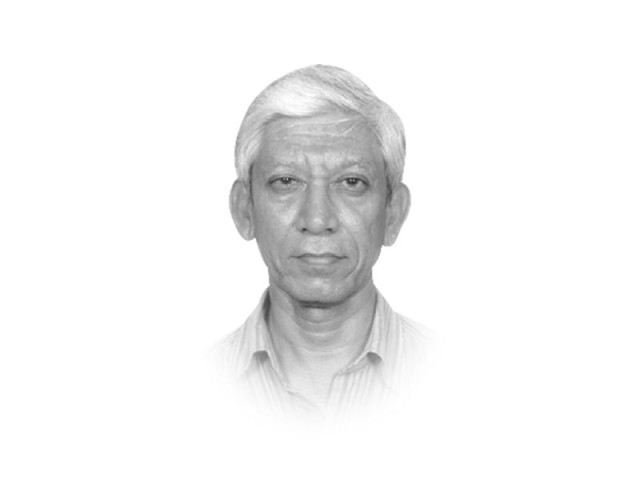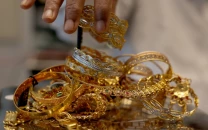Competing narratives of Partition violence
Sindh did not undergo“retributive genocide” & consequent total ethnic cleansing that partitioned Punjab suffered.

The return to this highly revealing academic essay was occasioned by the recent publication of an interesting newspaper article “Manto and Sindh” (Dawn, May 27) by Mr Haider Nizamani. The writer correctly points out the marked difference between the ways Sindh and Punjab (the two provinces of present-day Pakistan as well as the two multi-ethnic, multi-religious larger communities on either sides of the border) experienced collective violence and mass migration at the time of Partition. As such, Nizamani justly complicates and questions what is taken as the dominant ‘national’ narrative of the 1946-47 violence that needs to be seen exclusively belonging to Punjab based on its unique experience, during and after Partition.
Sindh, clearly, did not undergo the kind of “retributive genocide” and the consequent total ethnic cleansing that the partitioned Punjab suffered. Nizamani argues that the experience of Punjab at the time of Partition should not be generalised as that of other parts of the present federation that do not share in full measure the high level of anti-non-Muslim rhetoric and fascination with the so-called ‘Pakistan ideology’ and its resultant militarism.
Nizamani expresses satisfaction on the fact that “Sindh has no equivalent of Saadat Hasan Manto as a chronicler of Partition. And the absence of a Manto-like figure in Sindhi literature on that count is good news. It shows the resilience of Sindh’s tolerant culture at a time when Punjab had slipped into fratricidal mayhem”. However, it was Manto who made a point similar to the one put forward by Brass and which we can benefit from even today, when the compulsions of domestic identity politics have created at least three competing historical narratives held by Punjabis, Sindhis and the Urdu-speaking Mohajirs of Sindh respectively.
Manto says: “Both Hindus and Muslims were being massacred. Why were they being massacred? There were different answers to the question; the Indian answer, the Pakistani answer, the British answer. Every question had an answer, but when you tried to unravel the truth, you were left groping.”
Let us begin with the ‘Mohajirs’ in Sindh — the community that I happen to belong to — who are as diverse a lot as any other in our country. As a result of a series of political decisions of inclusion and exclusion, they define themselves as the people (and their descendants) who migrated into Sindh mainly from UP/MP, Bihar, Gujarat, Rajasthan and Hyderabad, although the first category seems to dominate the rest culturally and politically.
It is interesting to note that those who came from East Punjab even to Sindh are excluded from the list; the popular community narrative nevertheless takes exclusive ‘credit’ for the ‘sacrifices’ made as a result of the Partition massacres that uniquely took place in the East and West Punjab! The ‘Mohajir’ narrative — as well as the current demand for ethnic division of Sindh being raised by a minority among them — is, therefore, more easily dismantled and shown to be wanting than the other two competing ones.
The current Sindhi narrative of the Partition events is not so seamless and impregnable either, as it is no less shaped by the event that occurred afterwards. True, the kind of violence that shook the two parts of Punjab was not experienced by Sindh as it decided to join Pakistan and a large part of its Hindu population left without being massacred. But the period in question was no less traumatic for the Sindhi Hindus who were made homeless.
Mohan Kalpana, the renowned Sindhi fiction writer, notes in his autobiography, “India’s freedom brought me no joy and in the last 35 years I have never once offered salutes to the Indian flag. I always found this freedom lacking and I never participated in the Independence Day celebrations. It reminds me that on this day we were dispossessed of our country.”
Nizamani goes on to present a rather uncomplicated explanation: “The violence against Sindhi Hindus and their mass migration to India was a tragic loss scripted, orchestrated and implemented by non-Sindhis in Sindh.” However, there are historical references that seem to question this view.
One such reference is a quote from Mohammad Ayub Khuhro, when he held the portfolio of Public Works in the Sindh ministry after the 1946 elections. He is quoted by Parsram V Tahilramani in his 1947 book Why the Exodus from Sind: Being a Brief Resume of Conditions Responsible for Exodus of Hindus, Sikhs and Harijans from Sind as saying: “Let the Hindus of Sind leave Sind and go elsewhere. Let them go while the going is good and possible; else I warn them that a time is fast coming when in their flight from Sind, they may not be able to get a horse or an ass or a gari or any other means of transport.”
Tahilramani is clearly of the view that their exodus was the result of a concerted campaign conducted by the leaders of the Sindh Muslim League during and after the 1946 elections.
Published in The Express Tribune, June 2nd, 2012.














COMMENTS
Comments are moderated and generally will be posted if they are on-topic and not abusive.
For more information, please see our Comments FAQ